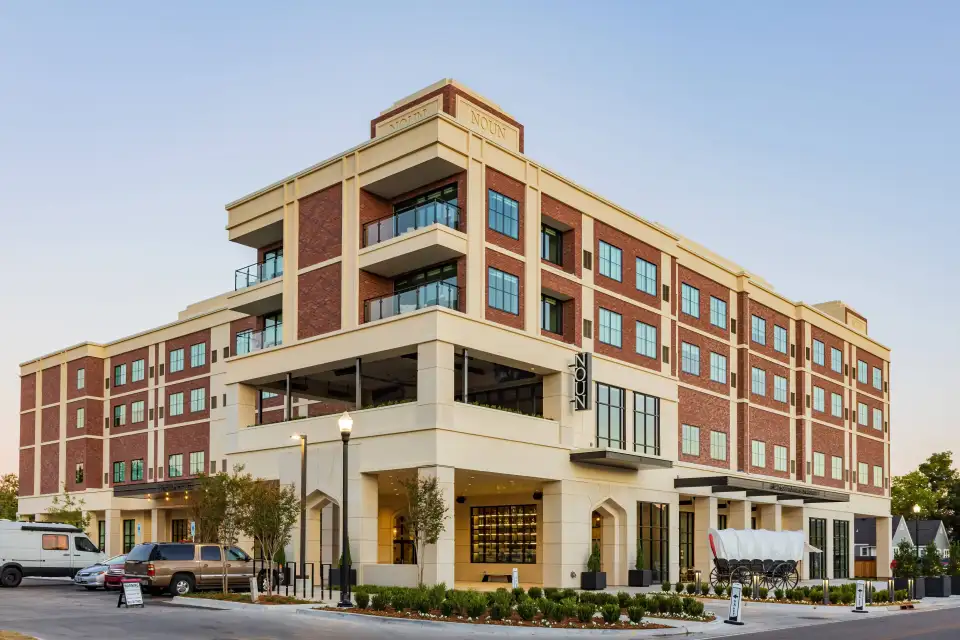
Architects and specifiers are seeking to push past what were previously considered to be design limitations and work to specify building materials that deliver a sophisticated, modern aesthetic, blending a variety of materials. They are no longer satisfied with the monochromatic, single-material building façade that dominated the look of commercial and multifamily residential buildings decades ago. The outcome is combining the look of wood, metal, and brick for buildings that might include a new school for a growing exurb, a high-rise residential condominium for discerning urban dwellers, or a health care facility that aims to improve the level of care in the community.
At the same time, architects and specifiers must adhere to strict standards when it comes to the performance and energy efficiency of the building envelope, because it is the barrier to the outside world. How will the materials those professionals specify protect the inhabitants for the life of the building? How will it guard against moisture intrusion or mold? What R-value is it able to deliver to significantly impact a building’s energy consumption in a variety of climates?
For professionals in the Passive House world, these questions become even more vital because achieving superior performance metrics is crucial to obtaining certification. However, it’s not just Passive House construction that demands more durable and reliable materials. As modern building codes become more demanding and catch up with Passive House metrics, professionals are finding that traditional materials cannot deliver the level of performance they need. Using those materials also comes with additional time for installation and, quite often, greater cost.
Building product manufacturers have risen to the challenge with the introduction of resin-cast shapes. The result is a simulated brick and wood that deliver on the promise of a time-honored look with highly desirable performance and sustainable attributes capable of meeting even the most rigorous of building standards, including Passive House.
When it comes to the design of a building, curb appeal remains critical. Resin-cast shapes can deliver undeniable curb appeal based on how they are engineered. They are lightweight, flexible, and highly customizable. They very closely mimic the look of traditional materials, making it a challenge for even the discerning eye to determine that the resulting facade is not made of traditional brick or wood. At the same time, the base material for resin-cast brick or wood enables architects to design buildings with curved bricks or wood, something not possible with traditional materials.
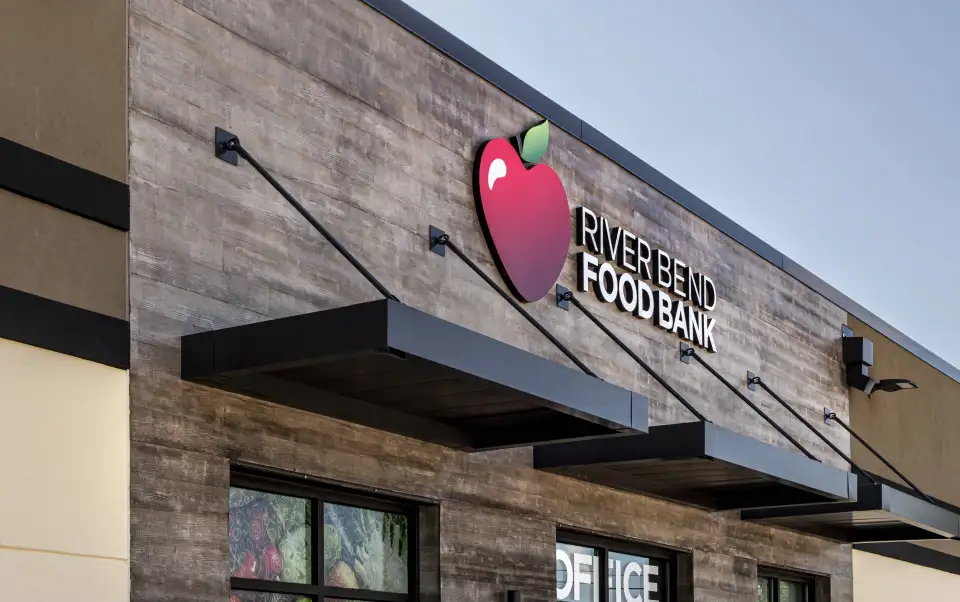
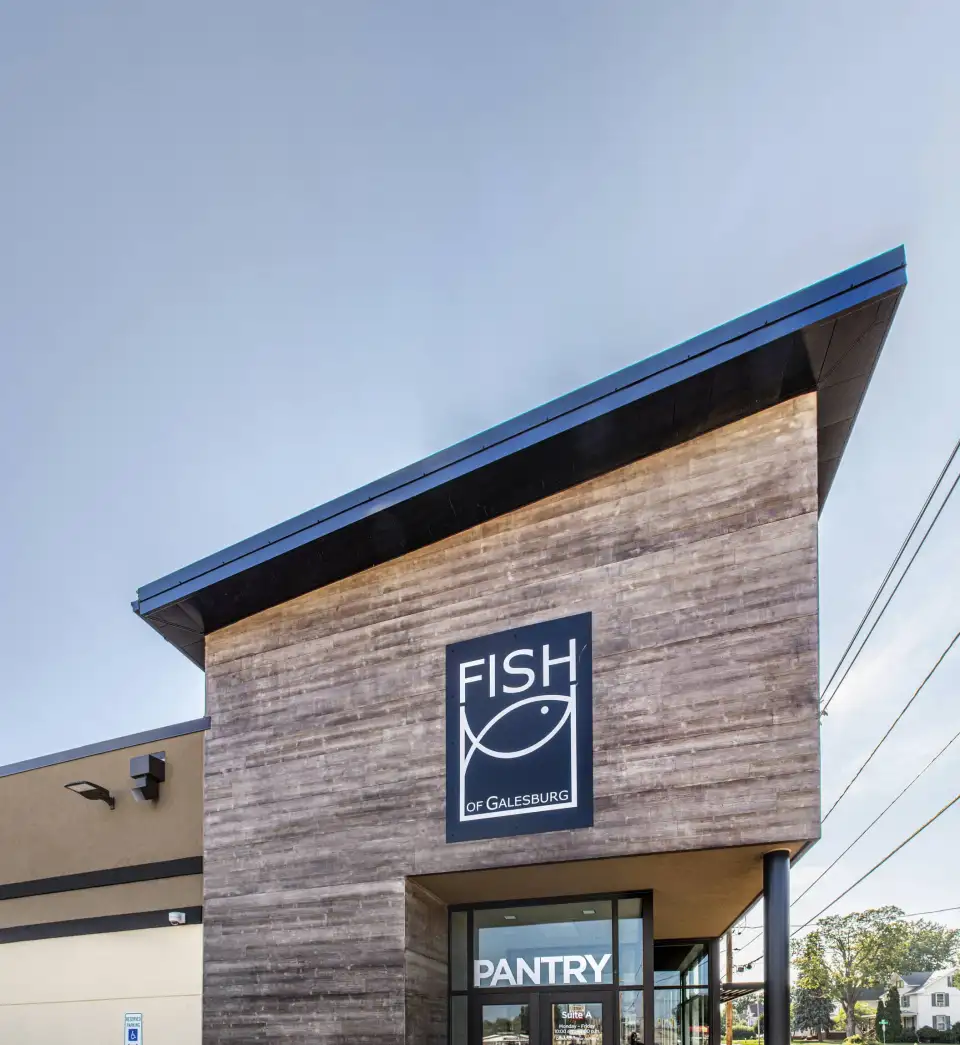
Resin-cast shapes give architects added aesthetic versatility. Wood shapes come in a variety of wood-grain patterns, avoiding the pitfall of duplicating patterns often seen in other cladding solutions. The material has depth, and the texture can be felt and seen. Similarly, resin-cast bricks can be made to match traditional brick textures and colors, while also being able to create unique looks.
Because of how they are made, resin-cast shapes enable designers to mix and match different looks without sacrificing on performance.
Resin-cast shapes are a key component of a fully engineered building enclosure system, ensuring the right components are in place from the start so the building envelope can withstand the forces of Mother Nature. Utilizing a building enclosure with control layers delivers durability, protection from the elements and a comfortable interior environment.
A smart, fully engineered system contains five control layer components, water, air, vapor, thermal, and water shedding/durability in a single, tested system that works as one, delivering the aesthetic desired and the protection required.
The first layer is a vapor control layer that is permeable or impermeable, per the design specifications, to minimize condensation by controlling the flow of water vapor as it shifts from high- to low-pressure areas. Second, is an air control layer that reduces energy and condensation loss by limiting the uncontrolled flow of air through the wall assembly. Next is a water penetration control layer that provides drainage for any incidental moisture that enters the wall cavity and is flashed to the cladding’s exterior, followed by a thermal control layer to mitigate energy loss, and prevent thermal bridging. Last, there is a durable, water-shedding layer to protect against environmental elements, impacts, UV exposure, pollutants and more.
Versatility and adaptability represent key value propositions to construction stakeholders throughout the chain—from the designer pouring over plans, to the contractor charged with installing the materials, to the building owner concerned about cost over-runs and the final product. Resin-cast shapes are custom-made in a controlled environment to deliver greater efficiency and accuracy.
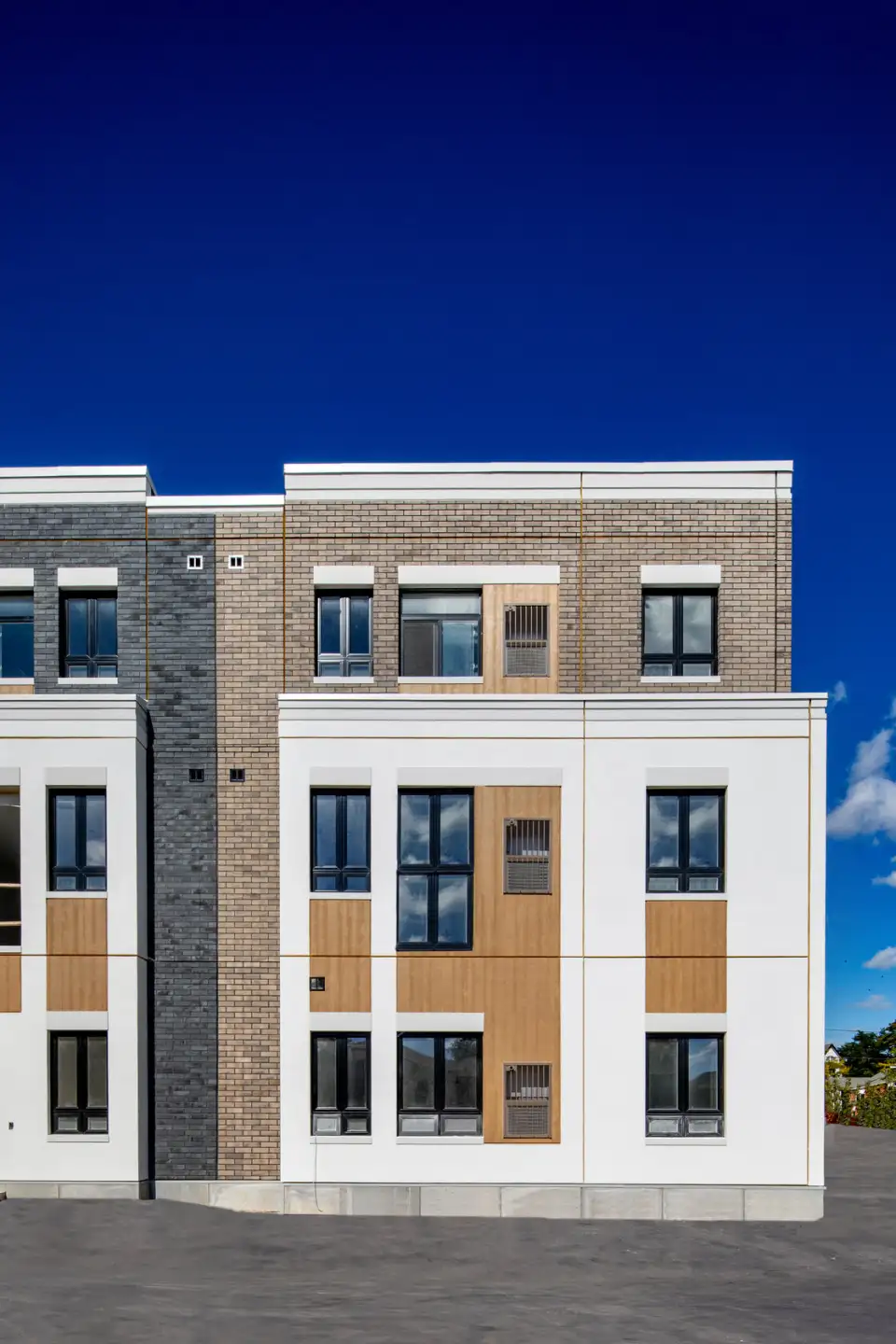
Using resin-cast shapes, designers have the freedom to implement any aesthetic desired and to mix and match materials without comprising the performance of the building envelope. By specifying such materials, architects help to drive greater efficiency.
Consider the traditional construction scenario where wood and brick are specified for the building envelope. This means the project team must coordinate the shipment of these heavy materials to the job site. Then, one crew must carry, shape and cut lumber. Another crew would need to lay brick and mortar. All of this must occur after the other control layers have been installed separately by other trades. Taken together, this costs precious time and money.
Installing a building envelope system with resin-cast shapes is done by one trade, eliminating the potential for scheduling complications and simplifying transitions for a smooth installation process. Additionally, the streamlined process means a one-source warranty for any issues that arise. A single installer and manufacturer can address these issues.
Moreover, resin-cast shapes can be easily installed over a variety of systems, from traditional EIFS to stucco to rainscreens. Resin-cast shapes are adhesively applied to the building envelope system using a non-cementitious adhesive product. There is no penetration of the building envelope with fasteners as there would be with traditional wood or brick installation, meaning the building envelope remains intact, reducing opportunity for thermal bridging or leaks that might affect blower door tests.
With traditional materials, an aesthetic renovation or update would typically mean deconstruction of the cladding and rebuilding. Due to the lightweight nature of the product, resin-cast shapes can be applied over existing cladding that is structurally sound with a skim coat and 1/8-inch mesh layer under the adhesive. This translates into cost savings in the present and the future, reducing landfill waste and enabling a modern façade to stand the test of time.
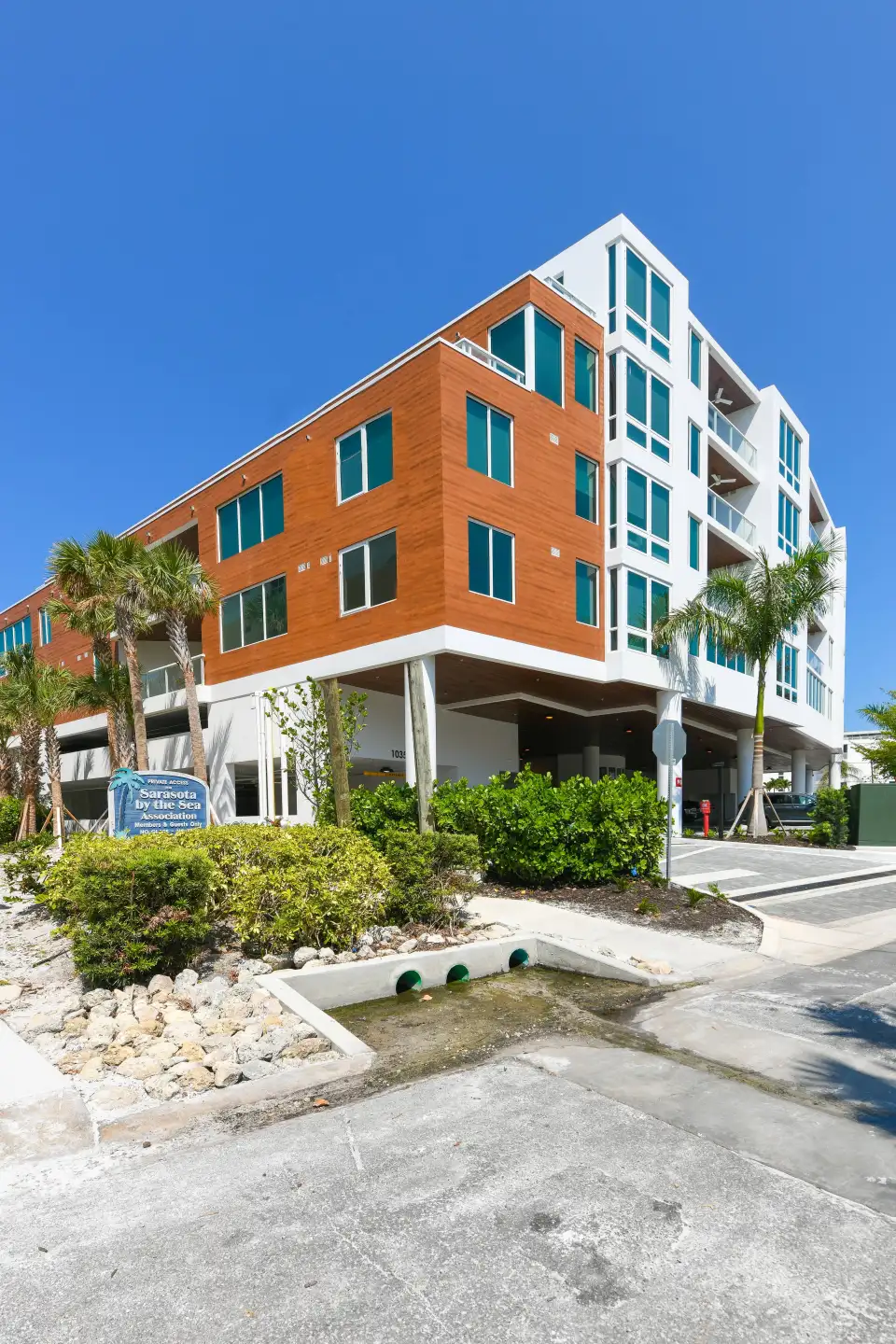
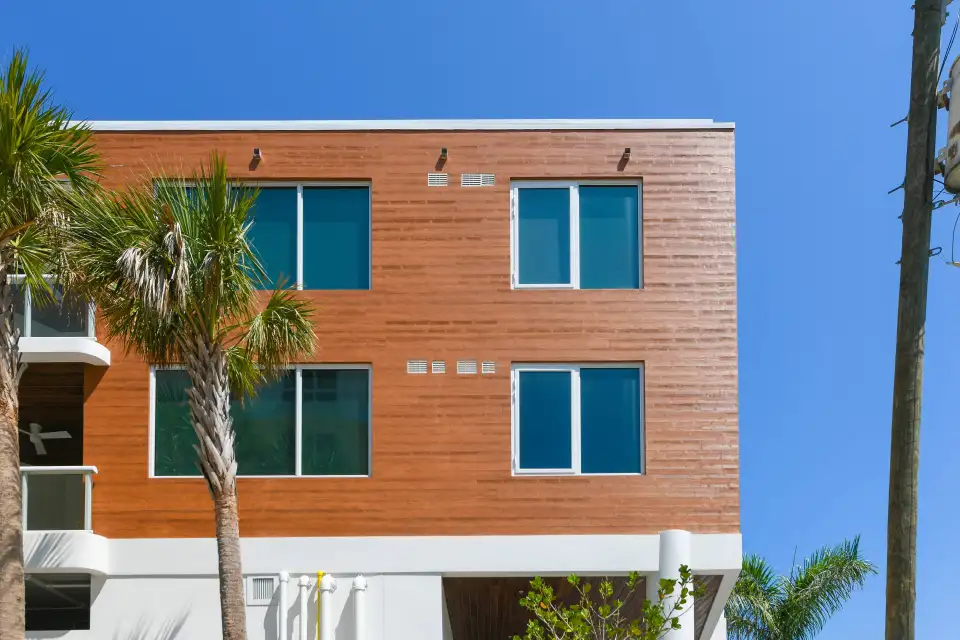
Architects, contractors and building owners want to ensure the safety of the crews constructing the new developments, as well as future building occupants. Resin-cast shapes are user-friendly, offering a lightweight option for crews that eliminates the need to transport and carry heavy wood panels and bricks. One box of resin covers 75 square feet for the wood aesthetic and 30 square feet for the brick aesthetic, adding up to a facade that can easily be carried on a scaffold.
Additionally, the installation process is simple and quick for the crew. One person lays the adhesive, and one person lays the shape, saving time, material and crew requirements. There is also no silica in the resin, so it can be easily cut with shears. The process does not generate sand or dust that is the usual byproduct when working with traditional materials.
As energy codes become more stringent and the effort to reduce consumption is even more important for building owners, architects and contractors must look for building materials that help to meet performance requirements while enabling design visions to come to life. The thinner and lighter resin cast shapes lower the carbon footprint of construction compared to the natural materials emulated, with less waste, lower transportation, and operational costs.
Additionally, manufacturers are improving product performance to maintain long life cycles and deliver a sustainable product to architects. Resin cast shapes do not need to be replaced or repaired frequently. The ultraviolet-resistant coatings are engineered to resist cracking or chipping, and recoating requirements are minimal.
In essence, resin cast shapes are designed to last for the life of the building and are tested for moisture intrusion and fire performance. When exposed to moisture, resin cast shapes remain constant and will not falter, unlike natural wood, which will warp and expand.